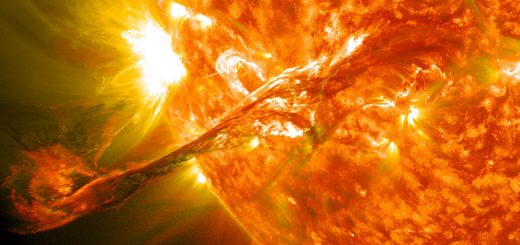Making Hydrogen Fuel Even Greener
Hydrogen has shown much promise as a green fuel. Pim Frederix investigates how the production of hydrogen can become even more environmentally friendly.
Since humanity realised it cannot keep using our quickly depleting supply of fossil fuels, researchers have been frantically searching for alternatives. Hydrogen (H2) is attracting more and more attention as a more sustainable fuel (especially useful in cars). H2 is a clean fuel since its only combustion product is water, rather than greenhouse gases and soot, and would therefore be a good replacement. The energy needed for the production of hydrogen gas can often be drawn from renewable sources like wind and solar power, making it even more attractive. However, the current method for converting hydrogen into energy relies on heavy metal (like platinum) fuel cells, which are environmentally unfriendly, expensive and relatively inefficient. This therefore limits the potential exploitation of H2. Moreover, most hydrogen is produced by steam reforming, which still requires fossil fuels (mostly methane). This has prompted the research groups of Rein Ulijn (Department of Chemistry) and Neil Hunt (Department of Physics) at the University of Strathclyde to look into the use of alternative systems to improve the production and harvesting of hydrogen.
Searching for catalysts
The development of catalysts is a very important research theme within chemistry. Its goal is to lower the energy required for a reaction to proceed so that less heat or electricity is needed to form the products. An ideal situation for hydrogen is depicted below; with a catalyst (blue line) H2 can be formed without crossing the high energy barrier in the reaction progress. To achieve this in practice, scientists have once again drawn inspiration from nature. In the late 1990’s a type of bacteria was discovered near oceanic volcanoes which was found to produce hydrogen using its own microscopic hydrogen fuel cell. The enzyme responsible for the conversion of the hydrogen (called hydrogenase) has been isolated and can be modelled by a small molecule with two iron atoms. These model systems have already shown that they can produce hydrogen on a small scale 1, but they are generally unstable in the presence of water, light and oxygen (which are typically quite abundant substances). Moreover, their production rate is often insufficient for commercial applications.
Finding solutions
One way to approach the current problems with the hydrogenase models is to vary the functional groups around the iron atoms in the model or to even replace the iron with a different metal like nickel. Very recently, a US research group has demonstrated that they could surpass the catalytic rate of the native enzyme by a factor of 10, producing 100,000 molecules of hydrogen per second per catalyst molecule 2. At the University of Strathclyde, researchers have shown that you can further improve the stability and catalytic rate of existing catalysts by encapsulating them in a biomaterial. These materials have a gel-like nature, as shown in the title picture, comprised of short peptides in water. They are cheap, biocompatible and biodegradable with properties that can easily be modified 3. Using these materials, the hydrogenase mimic was much less sensitive to light. They also showed that in the gel it was stable for up to two weeks in an environment of 90% water, while it was completely insoluble in pure water. Water is crucial for hydrogen production; it is a good transporter or source of protons, the starting material in the formation of hydrogen, so that the catalytic rate of the model generally shoots up at least one order of magnitude in the presence of water. Moreover, confining a catalyst to an immobile pocket (the stiff gel material) is generally beneficial for the amount of H2 produced per second. These results will contribute to a cleaner and more efficient way of making the hydrogen needed for the next generation of energy consumers.
References
- Tard, C.; Pickett, C. J. Structural and Functional Analogues of the Active Sites of the [Fe]-, [NiFe]-, and [FeFe]-Hydrogenases. Chemical Reviews, 2009, 109, 2245–2274
- Helm, M. L.; Stewart, M. P.; Bullock, R. M.; DuBois, M. R.; DuBois, D. L. A synthetic nickel electrocatalyst with a turnover frequency above 100,000 s-1 for H2 production. Science, 2011, 333, 863–866.










